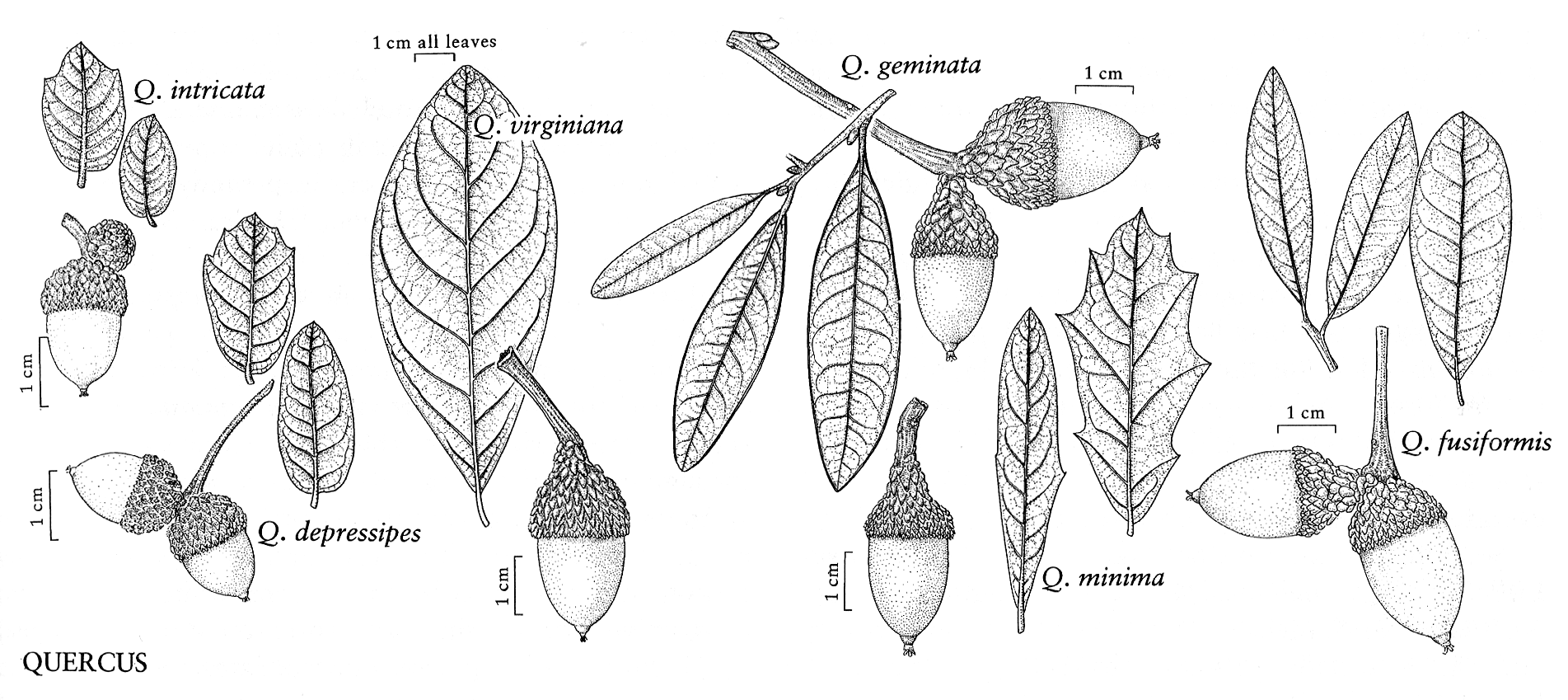There are 24 species of oak (trees and shrubs) in Florida, and 50-60 in North America north of the border so it is no small task to sort them all out. Acorns! When present these provide a good clue you are dealing with an oak. That is a good first step (if they are present at the time of year that you are looking). However more than few of the deciduous oaks look superficially similar, so you need to be pretty sharp to distinguish them. Here we look at a few examples that are multi-lobed (3-9+) and bristle tipped, these include Shumard oak and Nutall's oak. Mostly we have Shumard and Nutall's oaks planted on the FSU campus - and often in close proximity. Included for interest is turkey oak, there are none on campus but it is common in Tallahassee. In this posting we look at all three together to facilitate their comparison.
 Quercus shumardii |
Shumard oak - Quercus shumardii
Description: Medium to large deciduous tree up to 30 m tall.Flowers: Long narrow hanging catkins 14-18 cm long. Fruit: Acorn, solitary or in pairs, 1.5-2.5 cm long, cup shallow saucer shape and enclosing about a third of the nut. Leaves:7-15cm long and 6-12 cm wide alternate, simple and and lobed with 7 or sometimes more lobes, each lobe with several smaller secondary lobes, upper surfaces dark green, lower surfaces also shiny green but with small tufts of pubescence in the vein axils, old and fallen leaves with black spots on the surface.
Similar to: Distinguish from the other bristle tipped and lobed oaks by having only tufts of pubescence on lower leaf surface and by having straight rather than twisted petioles, and from the species most similar to it black oak Q. velutina by have more than sevel lobes. The shorter, relatively wide leaf distinguishes sterile specimens from Nuttall oak.
Map of Shumard oaks on FSU grounds in Tallahassee
 Quercus nuttallii from the Louisiana State University website |
Nuttall oak - Quercus texana and formerly Q. nuttallii
Description: A deciduous tree to 25+ m in height. Bark dark brown with flat ridges divided by shallow fissures. Twigs red-brown to gray. Flowers: Male flowers borne from tips in conspicuous hanging catkins. Fruit: Acorn 2-3 cm long, biennial; cup thin (scale bases visible on inner surface), deeply goblet-shaped with pronounced constriction at base. Leaves:alternate, simple 7-20 cm long x 5-13 cm with 6-11 asymetric lobes and 9-24 awns, lobes; lower leaf surfaces hairless except for conspicuous axillary tufts of tomentum, veins raised, upper surface not raised and free of hairs.
Similar to: Occurs only in cultivation in Florida but is native in nearby Alabama, Arkansas, Louisiana and Mississippi where it is common in wetlands. Bristles or awn like tips of leaves less acute or numerous than Shumard oak.
Map of Nuttall oaks on FSU grounds in Tallahassee
 Quercus laevis |
Description: A small deciduous tree to 15m in height with grey furrowed and blocky bark. Flowers: Male flowers borne from tips in conspicuous hanging catkins 8-12 cm long. Fruit: Acorn 2-3 cm long, wide at base and tapering to apex. Leaves:alternate, simple 7-30 cm long with 3-7 deeply cut bristle tipped lobes, bases tapered, lower surfaces hairy in the vein axils and petioles twisted so the leaves are held verticle to the ground.








 A medium sized live oak on FSU campus.
A medium sized live oak on FSU campus.

